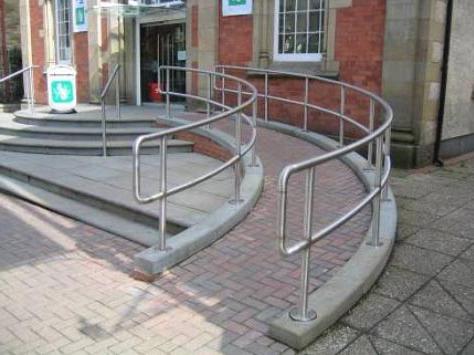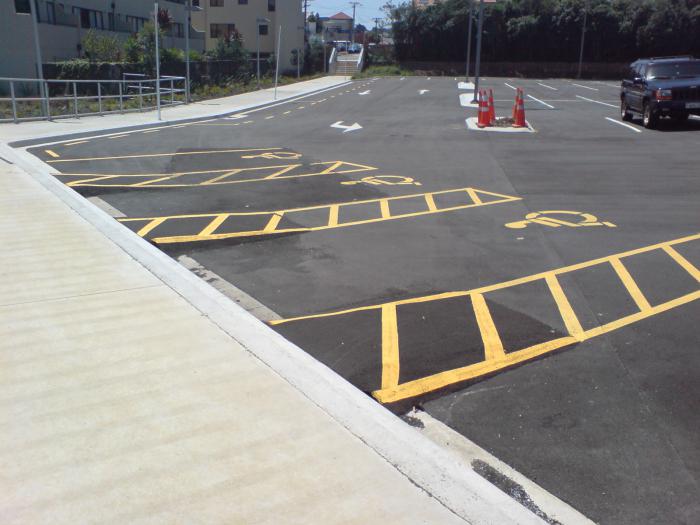The ramp - what is this? Destination and varieties
The ramp - what is this? In the general technical sense this device is a flat surface, connecting the other two, located at different heights relative to each other. Also they are called ramps. They are designed primarily to overcome the various hindrances in wheelchairs and wheelchairs. A large spread to date has been the installation of such a device on the stairs at the entrance to the railway and bus stations, shops, hospitals, entrances, and also inside buildings on the stairwells.

What is
A properly designed ramp usually consists ofof two horizontal (at the beginning and the end) and one inclined surface, or is equipped with transitions to the surfaces at the ends. These design features are intended primarily for the confident arrival and departure of people in wheelchairs without assistance.
Where applicable
With a narrow understanding of the word ramp (what is thisthe adaptation only for carriages) it is necessary to note and its other application. Ramps are also available in the theater (scenic stage detail) and automobile (in underground garages for movement between their floors).

How to translate
If we talk about such a concept as the meaning of the word"Ramp", then we can say the following. It is derived from the French expression pente douce, which in Russian translates to "gently sloping".
An irreplaceable device for people with disabilities
The disabled wheelchair is usually made ofmetallic materials, often with corrugation to prevent the wheels of the wheelchair from slipping. Its mandatory element is the side edges of safety. They should be at least 5 cm high.
There are three varieties of this transport device for wheelchairs:
- stationary;
- folding;
- removable.
Stationary ramp - what is it
When considering the first varietysay that this is the most common among the listed species. These ramps are designed for a long service life and are non-removable. As a rule, they are mounted on the stairs at the entrance to the buildings.

Stationary structures can be one- ortwo-span (with a transitional platform between the spans) and mandatory presence of supporting side handrails. The handrails must be continuous, parallel and with a length longer than the inclined surface. The material for manufacturing the base of these stationary devices is usually a concrete mixture or a metal base.
Convenient folding option
These ramps (as well as stationary ones) arenon-removable. However, there is the possibility of tilting or tilting if you do not want to use them. In this regard, usually installed a folding ramp in the entrance. The basis of the design is the same as that of the stationary one, only the guide strips have a rigid connection between themselves at the ends. The device itself is fixed with the help of specially mounted loops in the wall of the entrance. To use the design is removed from these loops and lies on the flight of stairs. After moving the stroller along it, the device is retracted and fixed to the retaining hinges (for unobstructed passage of people).
Types of removable ramps
The third kind is in turn subdivided into:
- telescopic telescopic;
- threshold;
- roll-ramps.
On the stairwells
Sliding telescopic ramps are intendedespecially for use in places where a stationary installation will severely interfere with the passage of people. Removable ramps are universal and can be installed on almost any flight of stairs. They are easy to assemble and unfold, and in assembled form they are often used for overcoming curbs in the street or for a small number of steps on the stairs.
At the entrance to the apartment
Ramps for thresholds have more compact dimensionscompared with other removable structures. They are intended for moving a wheelchair across thresholds in apartments, curbs on the street and other minor high-altitude obstacles. Installation of this design can produce one person due to its compactness and light weight.

For traveling
The third type of removable conveyingwheelchair accessories is a type of telescopic. The difference between it and the sliding cousins lies in the way of folding. Here the entire structure is folded along the length. This makes them very convenient for transportation, as the assembled design occupies a small place in the car or other vehicle, which is often of significant importance.
As of today, most oftenis meant by the term "ramp"? What is this device, which is intended primarily for people with disabilities. After all, this seemingly simple construction can not only significantly ease, but also improve their lives.
</ p>




